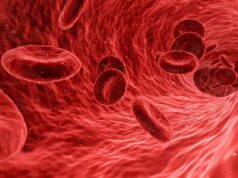
Despite a constant evolution in stent/scaffold design, stent failure is still perceived as a clinical problem. The process of drug-eluting stent struts thinning that occurred with the introduction of cobalt-chromium devices has been of utmost importance to significantly reduce the incidence of stent thrombosis and restenosis. Yet, suboptimal stent positioning represents a trigger for acute events even after deployment of scaffolds with optimal design and a valid polymer-drug combination. In this commentary, Francesco Prati explores the relevance of stent malapposition.
Malapposition has been advocated as one of the indicators of incorrect stent positioning, potentially capable of ominous complications such as stent thrombosis or other cardiovascular events. It has been suggested that acute malapposition can promote stent thrombosis by disturbing the normal laminar blood flow along the vessel wall and increasing the deposition of platelets and fibrin. This process may be associated with reduced re-endothelialisation and increased neointima.
Furthermore, preliminary data for the use of intravascular ultrasound (IVUS) after deployment of first-generation drug-eluting stents indicated malapposition as a possible trigger for stent thrombosis and acute myocardial infarction during follow up. However, clinical data obtained with both IVUS and optical coherence tomography (OCT), mainly after positioning of new-generation drug-eluting stent, challenge this concept.
The CLI-THRO study, previously published from our group in the American Heart Journal, addressed the incidence of suboptimal results in 21 consecutive patients exhibiting subacute thrombosis. OCT was preferred to IVUS because of its high resolution that depicts superficial features such as malapposition with the highest accuracy. The patients were matched 1:2 with a control group of 42 patients from the Euro-Image Research core laboratory database. In the group with subacute thrombosis, procedure-related problems such as underexpansion, edge dissection, and reference lumen narrowing were by far more frequent. However, the prevalence of malapposition did not differ between the two groups.
Such findings with OCT were not unexpected. In fact, consistent with this finding, the large IVUS substudy of the ADAPT-DES (Assessment of dual antiplatelet therapy with drug-eluting stents) excluded malapposition as a plausible mechanism of stent failure.
More recently, the CLI-OPCI II study has specifically explored the clinical impact of OCT features of suboptimal stenting. The study, published in JACC Imaging (in 2015), addressed the role of OCT findings after percutaneous coronary intervention (PCI) in a large population comprising 832 patients and 1,002 lesions with a median follow-up of 319 days. The CLI-OPCI II showed that OCT-defined suboptimal stent deployment was a relatively common finding (31% of cases), with a significantly higher prevalence in patients experiencing major acute cardiac events in the first year of follow up (59.2% vs. 26.9%; p<0.001) and was an independent predictor of worse outcome (hazard ratio=3.53; p<0.001). Importantly, the CLI-OPCI II study was instrumental in identifying quantitative metrics indicative of good stent positioning. Incomplete lesion coverage, residual reference segment stenosis, distal dissections and small final in-stent minimal lumen area were found to be important findings related to stent failure. Importantly, the CLI-OPCI II data corroborated previous IVUS and OCT findings that failed to relate acute stent-vessel wall malapposition with clinical outcome. Such conclusions further confirmed the CLI-THRO findings. In fact, the prevalence of stent malapposition was similar in the major adverse cardiac events (MACE) and control arm (48% vs. 49% respectively; p=ns).
However the CLI-OPCI study did not address a burning question: what is the clinical role of the largest grade of malapposition? A dedicated CLI-OPCI substudy, published in Catheterization and Cardiovascular Interventions (2016), explored this issue by studying the clinical consequences of malapposition in 1020 stented lesions (864 patients).
End procedural OCT assessment revealed stent malapposition to be a common finding. At the receiver operating characteristic (ROC) curve, the presence of a malapposition >0.2mm in thickness and >2.1mm in length showed the best predictive accuracy for outcome (C-statistic 0.52, confidence interval 95% 0.47-0.58; p=0.394). Overall, this grade of malapposition was observed in 36.4% (371/1020) of the stented segment, being more frequently observed in left main, calcific lesion and at bifurcation sites. Regarding the amount of stent malapposition, in terms of width and length, none of the observed grade significantly correlated with outcome. For instance, even in the large group (about 30% of cases) that showed a malapposition exceeding 300µm in thickness, a distance unlikely undergoing spontaneous resolution during the follow-up, there were no clinical consequences. The same conclusion was valid in presence of malappositions exhibiting the greatest length grades.
Malapposition is certainly a common finding after coronary interventions and is correlated with vessel size and lesion complexity. The fact that it does not affect the clinical outcome after deployment of new generation drug-eluting stents should be seen as good news.
Francesco Prati is at San Giovanni Addolorata Hospital and Centro per la Lotta Contro L’Infarto – CLI Foundation (both Rome, Italy)










